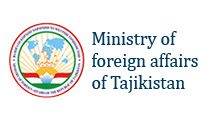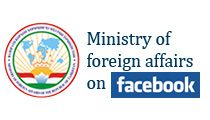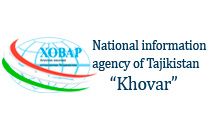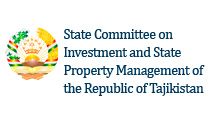In this international context and in our domestic context of never ending growing budget deficit, it is worthwhile asking ourselves if it is wise to devote so much money to one front-line regional player without clearly defined tracking mechanisms? What would those 70% or $5.18 billion have achieved if they had been allocated to other front-line states, notably those that could play an active role in the efforts to stabilize Afghanistan such as Tajikistan?
It is important to break away from that self-imposed mental limitation of “we have no other choice because we are too deep in already.” We do have the choice to say no to being treated like a milk cow and the right to seek out other partners that may prove more reliable, sympathetic and committed to the objectives we are pursuing, and should we mention it, not harboring anti-American feelings and rhetoric? After all, if diversification is considered key to sound financial investments, why wouldn’t the rule be the same with our foreign political investments?
Tajikistan: the quiet player
Though bordering Afghanistan and China, Tajikistan remains a blank spot on the radar screen of many, mostly because nothing significantly bad or good has happened there to make the press headlines. However besides a common border of over 1,200 kilometers and a rich common history with Afghanistan, Tajikistan is probably the country as a neighbor that has the most to offer for non-military solutions. Trade connections have existed for centuries, languages are similar and nearly 27% of Afghanistan’s population is composed of ethnic Tajiks, the second largest ethnic group after the Pashtuns.
Understanding the momentum of the international community built around the stabilization and rebuilding efforts for Afghanistan, Tajikistan never misses an occasion to remind the world about these natural ties. In his yearly address to the Parliament delivered on April 20, 2011, President Emomali Rahmon restated the existing collaboration with the United States and the European Union to establish peace and stability and the joined efforts to fight terrorism, extremism, illegal drug trafficking and transnational organized crime. Surely, such statements are self-serving but it is also indisputable that Tajikistan could play a huge supporting role, far beyond its present involvement.
Tajikistan, one of the poorest countries in the world, does face immense challenges of its own, however boosting trade and exchanges with Afghanistan is definitely seen as a mutually beneficial venture. Understanding that trade brings prosperity, which in turn fosters peace and stability, the United States has financed the construction of a bridge over the Panj River, which resulted in a significant increase in the transit of goods. Additional transit routes into Afghanistan would facilitate the exchange of food products, consumer goods and construction materials but also water and electricity. The lack of energy and its sporadic supply has been an impediment to development and a deterrent for businesses to build production facilities for many goods that could be produced locally.
Supplying NATO forces with non-military supplies through the Northern Distribution Network (NDN) could also become a bonanza. The NDN is a network of supply lines into the northern part of Afghanistan, which is an alternative to Pakistan that allows the transit of supplies from ports in the Baltics and on the Caspian Sea through Russia, Central Asia and the Caucasus. The NDN could benefit from the many projects financed by the international financial institutions such as the Asian Development Bank that is financing the rehabilitation and construction of roads in Tajikistan. The extension of the railroad network and modernization of existing airports are also in the pipeline.
Using Tajikistan as a staging and operating ground
Despite its intrinsic weaknesses and shortcomings, Tajikistan is a much safer and welcoming environment for foreigners compared to Afghanistan and Pakistan. With international flights coming in from Frankfurt, Moscow, Istanbul or Dubai and hotels, roads, bridges and tunnels being built and rehabilitated, operating out of Tajikistan is no longer the challenge it once was. So what could be done?
- Foreign expertise could be brought in for training purpose and to help with capacity building. This could be done in educational and healthcare facilities that could be built in Tajikistan to serve Afghans and then at a later stage be left to benefit Tajiks;
- Additional funding could be devoted to building micro, small and medium hydropower stations and to complete transmission lines that could transmit hydro-electricity from water-rich Tajikistan to Afghanistan and Pakistan;
- Procurement and tender procedures could be simplified to allow Tajik farmers to supply Northern Afghanistan and NATO troops with food products after being taught how to meet set standards. For now becoming an accredited US military and NATO supplier is an obstacle course leading to ridiculous situations such as drinkable water being imported from Europe when Tajikistan is water rich and has a state-of-the art water and soft drinks bottling facility built with financing from the European Bank for Reconstruction and Development. With nearly 50% of its population involved in agriculture, Tajikistan could unleash a huge potential
Of course, reallocating money does not mean that similar or related problems present in Afghanistan or Pakistan will not appear in Tajikistan as well. It also does not mean that funding for Afghanistan and Pakistan should be dramatically cut, but the tradition of issuing blank checks should come to an end. On a strategic standpoint, helping Tajikistan assist Afghanistan also benefits Tajikistan, which is a country in desperate need of assistance to fight poverty and to deal with a crippled healthcare and education system. With nearly 35% of the population under the age of 14 and at a time where the rise of religiosity could be a breading ground for extremism, helping put the country at work seems to be a wise policy. Tajikistan is far from perfect but if we wait too long the problems of tomorrow may be ten times harder to solve then those of today.
By: Philip H. de Leon








